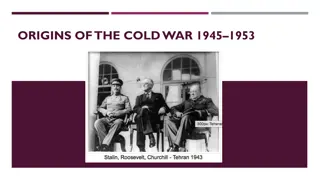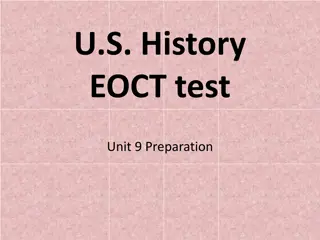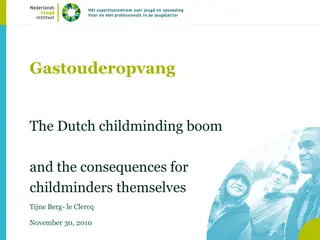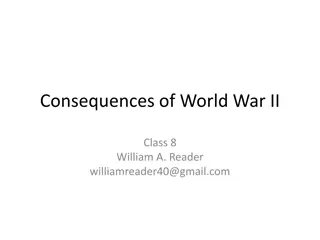Changes Among the Post-World War Baby Boom Generations in the UK
Comparison of post-World War baby boom generations in the UK reveals improvements in survival rates to age 70, increasing life expectancy, changing marital status trends, rising employment among older individuals, and a decrease in childless women at age 70. The data reflects evolving societal norms and conditions over time.
Download Presentation

Please find below an Image/Link to download the presentation.
The content on the website is provided AS IS for your information and personal use only. It may not be sold, licensed, or shared on other websites without obtaining consent from the author. Download presentation by click this link. If you encounter any issues during the download, it is possible that the publisher has removed the file from their server.
E N D
Presentation Transcript
How do the post-World War baby boom generations compare? Ngaire Coombs Office for National Statistics, UK
The post-war baby boom generations Births, England and Wales, 1914-2016 1,200,000 WW1 WW2 1,000,000 800,000 600,000 Post-WW2 baby boom, born 1946, turned 70 in 2016 400,000 Post-WW1 baby boom, born 1920, turned 70 in 1990 200,000 0 1922 1974 1914 1918 1926 1930 1934 1938 1942 1946 1950 1954 1958 1962 1966 1970 1978 1982 1986 1990 1994 1998 2002 2006 2010 2014
Survival to age 70 has improved Survival to age 70, England and Wales And today s 70-year-olds also live for longer than their predecessors Life expectancy at age 70, UK 1920 20 15 Years 47% of babies born in 1920 survived to age 70 in 1990 10 5 0 Men Women 1946 1990 2016 67% of babies born in 1946 survived to age 70, in 2016 Smoking among 70 year olds in Great Britain has decreased, halving from 18% to 9% between 1990/91 and 2016 Source: General Household Survey / Opinions and Lifestyle Survey 0 200,000 400,000 600,000 800,000 1,000,000 Births Age 70
Marital status among people aged 70-79, 1991 and 2016, England & Wales Marriage is on the increase, but so is divorce Women, 1991 Men, 1991 3 8 3 7 17 40 49 73 Single Married Widowed Divorced Single Married Widowed Divorced Men, 2016 Women, 2016 3 5 9 12 12 30 55 74 Single Married Widowed Divorced Single Married Widowed Divorced
And marriage rates are highest for divorcees Marriage rates among people aged 70-79 by previous marital status, 2015, England & Wales 9 8 7 6 rate per 1000 5 4 3 2 1 0 Men Women Divorced Single Widowed
Fewer women are childless at age 70 today Number of children to women aged 70, 1990 to 2016, England & Wales 50 45 40 35 0 (Childless) 30 1 25 % 2 20 3 4 or more 15 10 5 0 1990 1995 2000 2005 2010 2015
Employment among older people is on the rise Employment for people aged 70-79 in Great Britain doubled from 4% to 8% between 1992 and 2017 Current financial situation, ages 70-79, 1991 and 2016, UK And people in their 70s are better off than previously
And people in their 70s are better educated than in the past Home ownership has increased In Great Britain in 1990/91 only half (52%) of people in their 70s lived in homes that were owned outright, compared to three quarters (78%) in 2016 Source: General Household Survey / Opinions and Lifestyle Survey Highest educational qualification, ages 70-79, 1991/92 and 2015, England 1991/92 2015 10 31 18 47 71 22 A level or higher GCSE or equivalent No qualifications A level or higher GCSE or equivalent No qualifications Source: Health Survey for England
People born in the post-WW2 baby boom are more likely to have children less likely to be widowed and more likely to be married, despite rises in the proportion divorced more likely to be working better educated more financially secure and likely to own their homes outright less likely to smoke than those born following WW1, at the same age
























